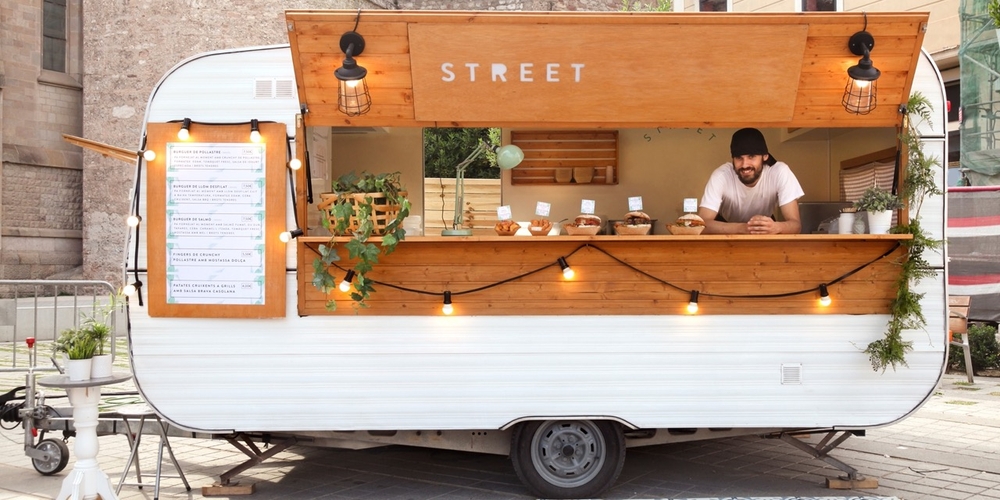How to Calculate Food Cost Percentage for Your Restaurant
Table of Contents

How to calculate food cost percentage
It’s a delicate balance: setting menu prices that keep hungry customers coming back for more, yet ensuring those very prices drive profit in an industry where margins are already notoriously thin.
One secret for successful budgeting? Determining food cost percentage—the proportion of sales revenue reinvested into the food that fuels your restaurant’s success.
For restaurateurs and owners to make informed decisions on menu pricing and inventory management, food cost percentage is a critical metric. But how do you calculate it, and what steps can be taken to optimize it? Join us as we delve into this comprehensive guide to find out.
Defining and calculating food cost percentage
Food cost percentage represents the share of total sales revenue allocated to food-related expenses. To find it, you want to calculate clear, on-the-dollar values of cost and profit during a defined period.
It takes just four steps:
- Establish your baseline: Decide on the period you wish to calculate for, be that weekly, monthly, or otherwise. Take inventory of initial food costs at the start of this period—preferably your regular scheduled shipments.
- Account for additional purchases: Beyond bulk inventory purchases, there are often supplemental purchases sprinkled in between. Make sure to add these.
- Determine leftover inventory: After your pre-decided baseline period has passed, calculate the dollar value of any remaining inventory.
- Calculate total sales: Put together a sales report to determine your total food sales during the baseline period.
With these factors in hand, calculating your food cost percentage becomes a fairly straightforward formula:
Food cost percentage = (Starting inventory + additional purchases) – Leftover inventory / Total food sales
Essentially, the goal of this formula is to determine how much you’re spending and earning for menu items. This gives you the most accurate picture of your food cost, as opposed to estimations or assumptions.
Let’s imagine your restaurant had the following values over a week:
- Starting inventory – $10,000
- Additional purchases – $5,000
- Leftover inventory – $13,000
- Total food sales – $7,000
With these figures in hand, your calculation would look like this:
| (10,000 + 5,000) – 13,000 / 7,000 (15,000 – 13,000) / 7,000 (2,000) / 7,000 = 0.285 (28.5%) |
This leaves us with a food cost percentage of 28.5%—well within the industry average of 28–35%. While the calculation process can be complex, it provides crucial insights into your restaurant’s financial status.
Keep in mind that food cost percentages can vary across different restaurant types. To find your ideal percentage, divide the month’s total food costs by total food sales and compare it with your actual percentage. This comparison can help identify if adjustments are needed in your pricing strategy.
What influences food cost percentage?
The restaurant industry relies heavily on global supply chains and is therefore vulnerable to outside factors that influence food costs.
Since ingredients make up a significant portion of total expenses, changes in food costs can quickly eat into your profit margins. Restaurateurs should monitor factors that may cause fluctuation in food cost percentage.
At the most basic level, purchase costs from suppliers determine baseline food expenses. So building strong supplier relationships and negotiating favorable contract terms can help secure budget-friendly ingredients.
Of course, suppliers also face cost pressures from various inputs:
- Extreme weather events or other disasters can wreak havoc on crop yields and livestock supplies, causing commodity prices to spike.
- Rising fuel and transportation expenses feed into supplier pricing as they ship products to facilities and restaurants.
- Labor shortages in food production and distribution networks can strain supply chains and lead to higher prices.
In addition to supply chain considerations, broader economic undercurrents influence food cost percentage. Inflation drives up costs across the board, and consumer demands can heavily sway menu item pricing.
With so many external variables at play, vigilant tracking of food cost percentage is essential.
Savvy restaurateurs can take a proactive approach by keeping current on market conditions, finding ways to streamline purchasing, negotiating better rates, and adjusting the menu as needed. With such diligence, the impact of volatility can be minimized.
Why is food cost percentage important?
Forming around one-third of a restaurant’s operating expense, food costs have a major impact on profitability. In fact, 80% of restaurants fail to make it to their 5th anniversary—largely due to the inability to sustain their operation costs.
Keeping food costs in check is a crucial ingredient to successful food entrepreneurship. Here are a few more specific reasons why managing food cost percentage matters:
- Optimal menu pricing: Tracking this metric gives you invaluable data to drive strategic decisions when pricing menu items and setting profit goals.
- Competitor comparisons: Accurate food cost percentage provides a metric for you to compare your restaurant against industry benchmarks and local competition.
- Business growth: Tracking your expenses month over month can help you determine trends—both in your restaurant and in the ingredient market. This helps you find areas you can optimize in your business and provides leverage when negotiating with suppliers.
- Informed menu changes: Changes in the overall food supply economy can be more readily identified, allowing you to change up the menu structure if necessary.
With proper analysis and control measures in place, food cost percentages can be optimized over time. By tracking food costs frequently, you ensure your restaurant is equipped with the insights and agility to achieve sustainable cost-efficiency.
Best practices for managing food costs
For restaurateurs, ensuring harmony between food costs and narrow profit margins is an endless balancing act. The ebb and flow of customer demands and market conditions require restaurateurs to stay on their toes.
Here are a few tips to help you strive for maximum efficiency in back-of-house operations:
- Utilize menu engineering: Factor total food costs, labor, and overhead expenses into menu pricing. Consider crafting rotating menus to take advantage of lower-priced seasonal ingredients.
- Conduct menu analysis: Break down the cost and sales of each dish. Identify high-contribution items to promote and market while removing or re-engineering laggards that aren’t selling as well.
- Reduce waste: Store and portion ingredients wisely to minimize any possible spoilage. Brainstorm creative ways to repurpose surplus inventory—such as converting it into a daily special.
- Renegotiate with suppliers: Seek quotes from alternative vendors and use that as leverage to negotiate better rates. Rinse and repeat this process regularly to ensure your restaurant retains the most competitive pricing.
- Optimal menu pricing: Tracking this metric gives you invaluable data to drive strategic decisions when pricing menu items and setting profit goals.
- Right-size portions: Overly generous portions raise costs and can lead to waste. Consider offering size options, or decreasing plate portions on dishes that tend to end up with leftovers.
- Leverage innovative strategies: The restaurant industry is more convenient and delivery-centric than ever. Consider exploring options such as ghost kitchens, allowing you to maximize delivery revenue with bare minimum overhead.
- Refine recipes: Substitute premium ingredients with more cost-effective options when possible. Standardize recipes for consistency. Strategically design dishes that balance high-cost ingredients with low-cost ones to further optimize pricing.
- Train staff: Ensure proper food handling techniques and portioning. Time is also a valuable commodity. Take preparation time and kitchen staff skill level into consideration when designing the menu and its prices.
After making any major changes, it may be good to spend some time monitoring how sales react to those adjustments. Results are rarely instant—sometimes taking a few months to fully manifest.
By cultivating a cost-conscious culture among staff, restaurants can make it a goal to trim down overall food costs and achieve higher profit margins. Guided by restaurateurs with a vigilant eye and forward-thinking mindset, even an unpredictable market can be navigated efficiently and successfully.
The role of ghost kitchens
Ghost kitchens offer a strategic advantage through lean operations and maximizing sales per square foot. Their delivery-only model translates to:
- Lower overhead compared to traditional restaurants
- Extra menu offerings—hold the added labor cost
- Flexibility to adjust menus seamlessly based on food cost trends
- Focus on optimizing profitability over veneer or ambiance
- Via cost-effective expansion, ghost kitchens allow you to grow revenue and margins simultaneously
The foundation of success in the restaurant business is minimizing costs while maximizing avenues of potential profit. An evergreen market also translates to fiercer competition and the need to stay on the cutting edge of innovative solutions.
Utilizing solutions like ghost kitchens can open up new avenues to lucrative operations. With the right approach, your restaurant can thrive—earning its place as both tasteful and financially viable.
Maximize restaurant profitability with CloudKitchens
Food cost percentage is just one of many factors that determine a restaurant’s viability. In an era where digital presence and delivery models drive more sales, the parameters for culinary success have evolved.
Imagine meeting those challenges by seamlessly running your entire restaurant operation from a single tablet. Or what if you could manage multiple brands from a single kitchen—taking advantage of an always-online market?
This is the reality CloudKitchens offers: modern solutions for modern restaurateurs.
We’re proud to provide a platform that empowers food entrepreneurs to scale into new markets and cook up new concepts in weeks instead of months. We’ll even handle the delivery fulfillment, upping your profitability so you can focus less on logistics and more on people.
Explore ghost kitchen locations across the US:
- Ghost kitchens in San Francisco
- Ghost kitchens in LA
- Ghost kitchens in NYC
- Ghost Kitchens in Toronto
- Ghost Kitchens in Atlanta
- Ghost Kitchens in Dallas
- Ghost Kitchens in Chicago
- Ghost Kitchens in Denver
- Ghost Kitchens in Miami
| DISCLAIMER: This information is provided for general informational purposes only and the content does not constitute an endorsement. CloudKitchens does not warrant the accuracy or completeness of any information, text, images/graphics, links, or other content contained within the blog content. We recommend that you consult with financial, legal, and business professionals for advice specific to your situation. |
Sources:
Hearst Newspapers. What Percentage Should a Restaurant Spend on Payroll? https://smallbusiness.chron.com/percentage-should-restaurant-spend-payroll-24851.html
CNBC. The No. 1 thing to consider before opening a restaurant. https://www.cnbc.com/2016/01/20/heres-the-real-reason-why-most-restaurants-fail.html
Aptito. Food Cost Formula – How to Calculate Food Cost Percentage. https://aptito.com/blog/food-cost-formula
More insights & stories


